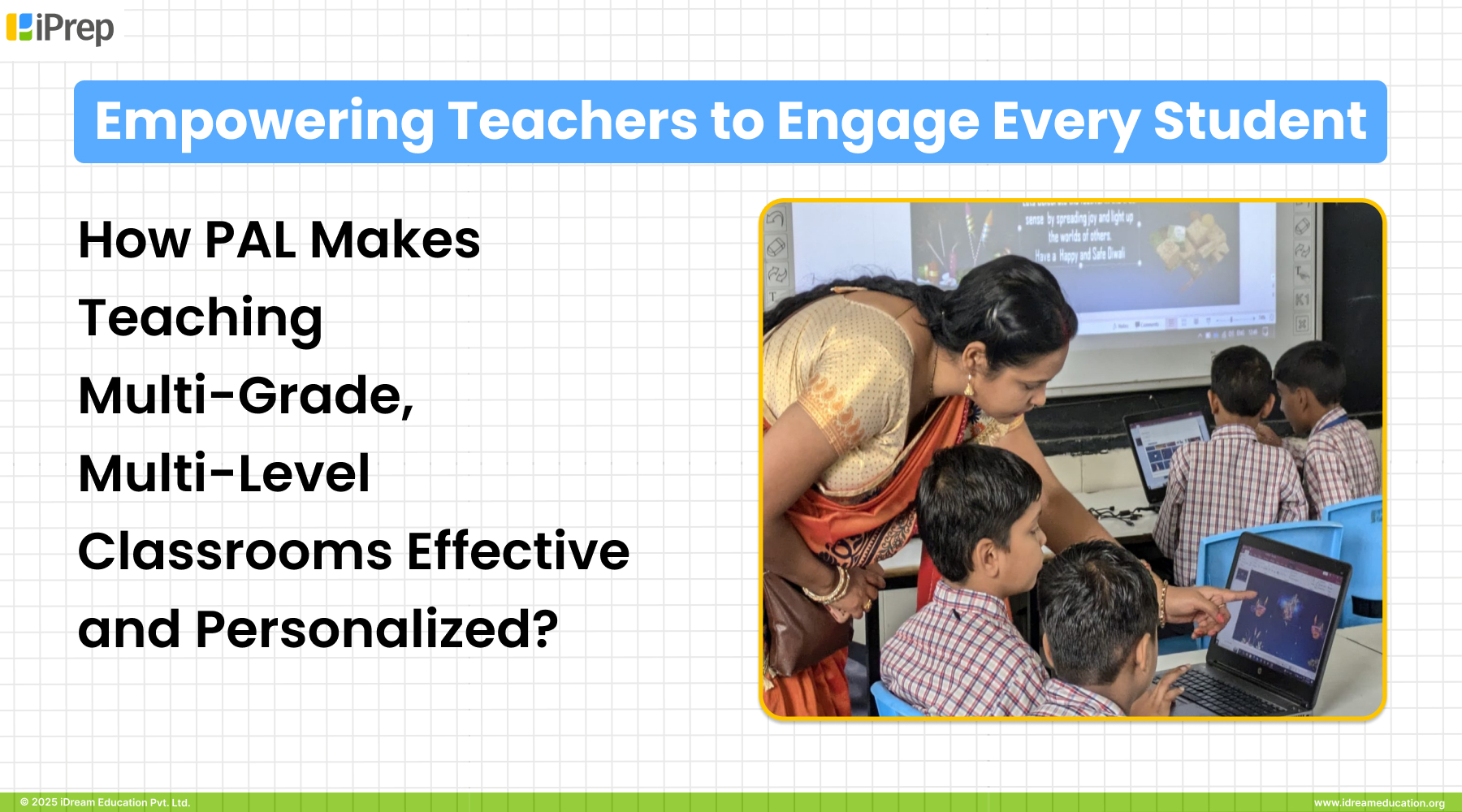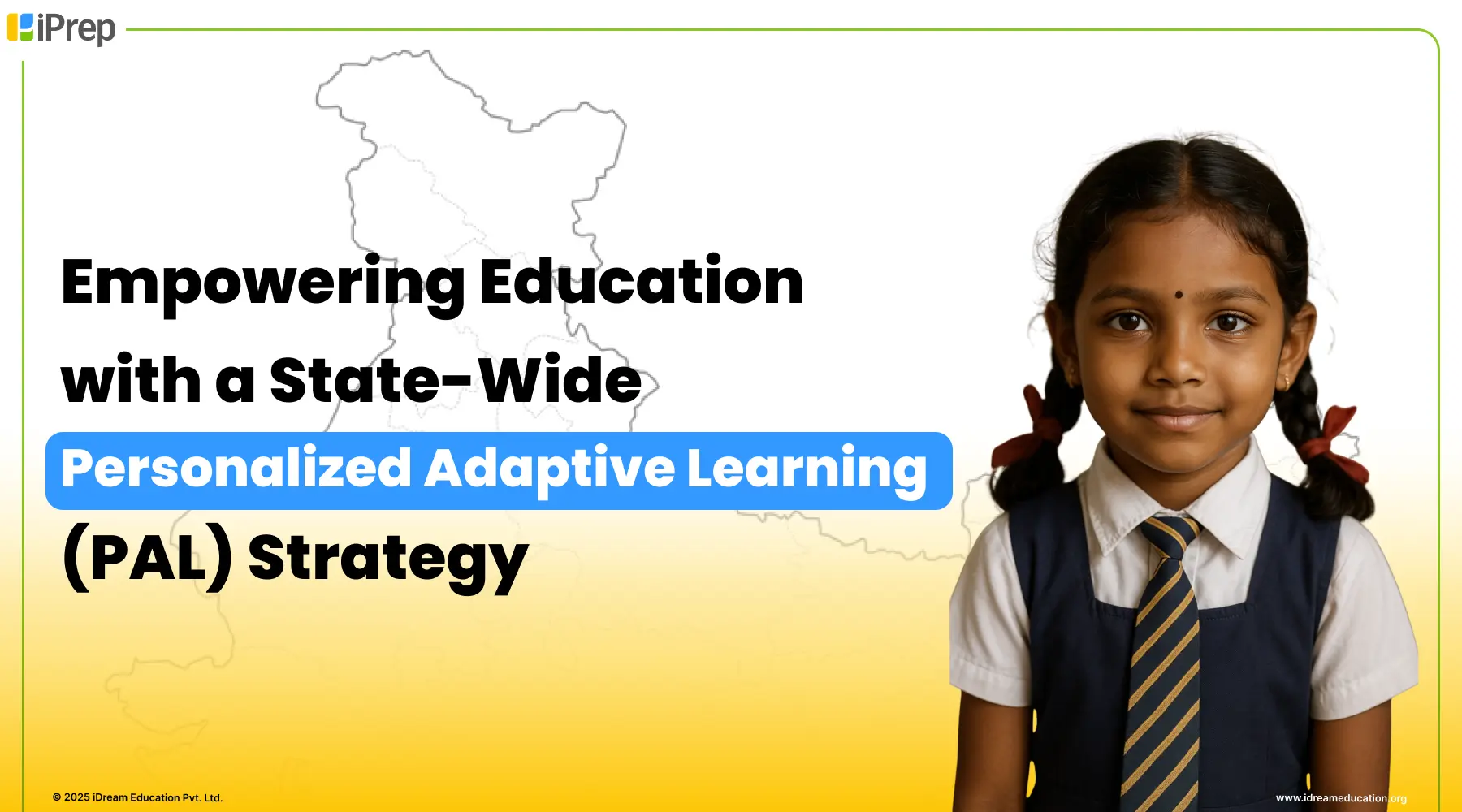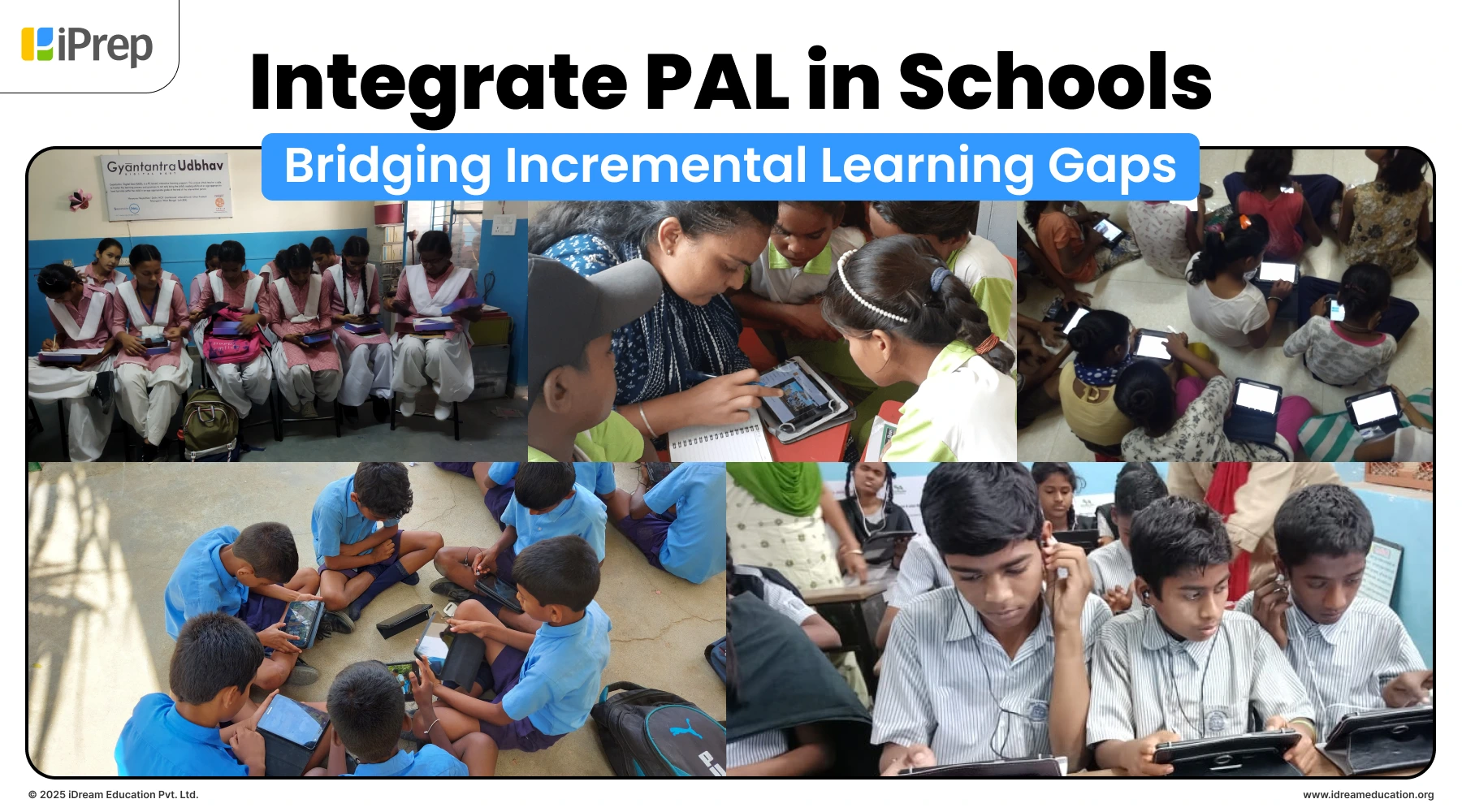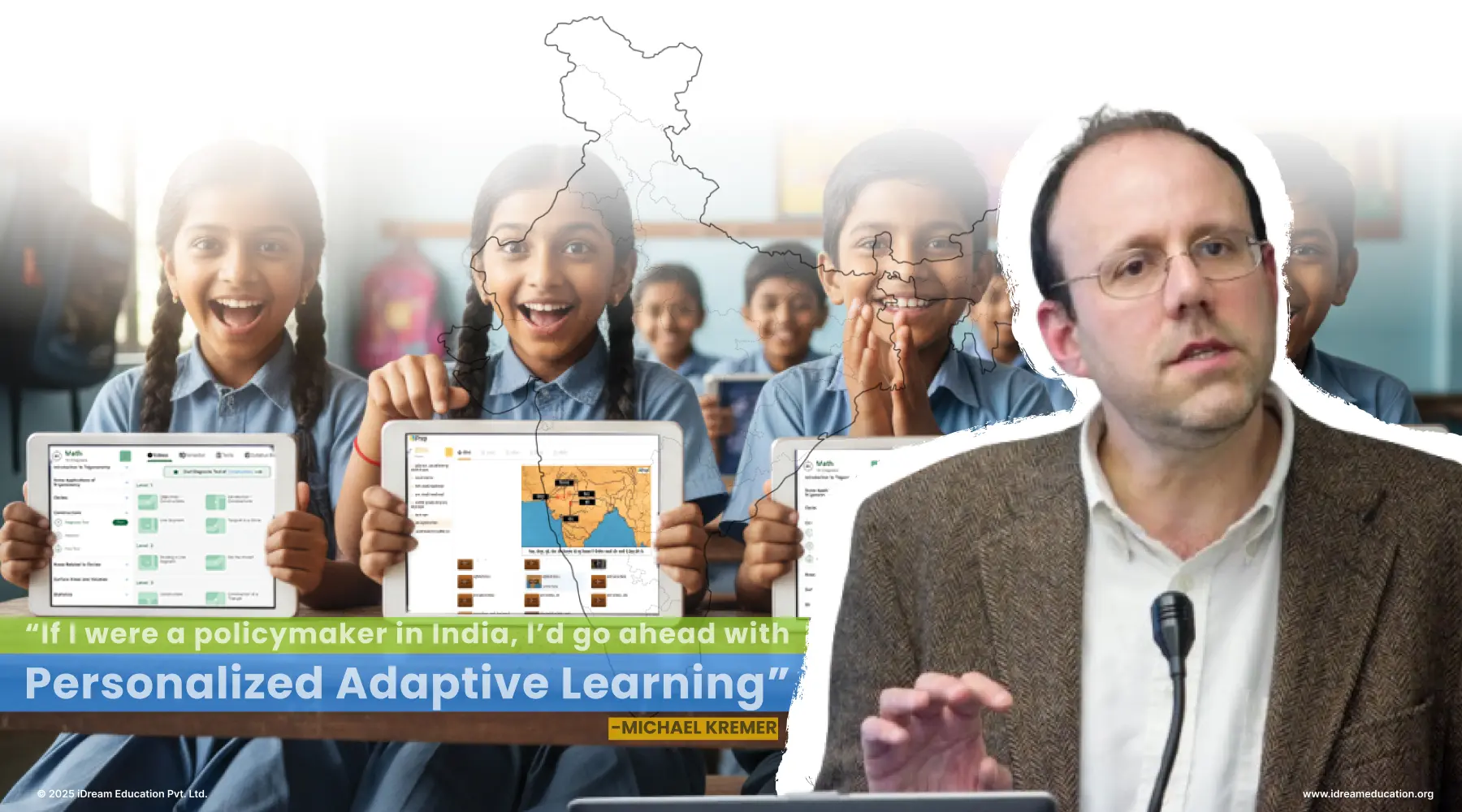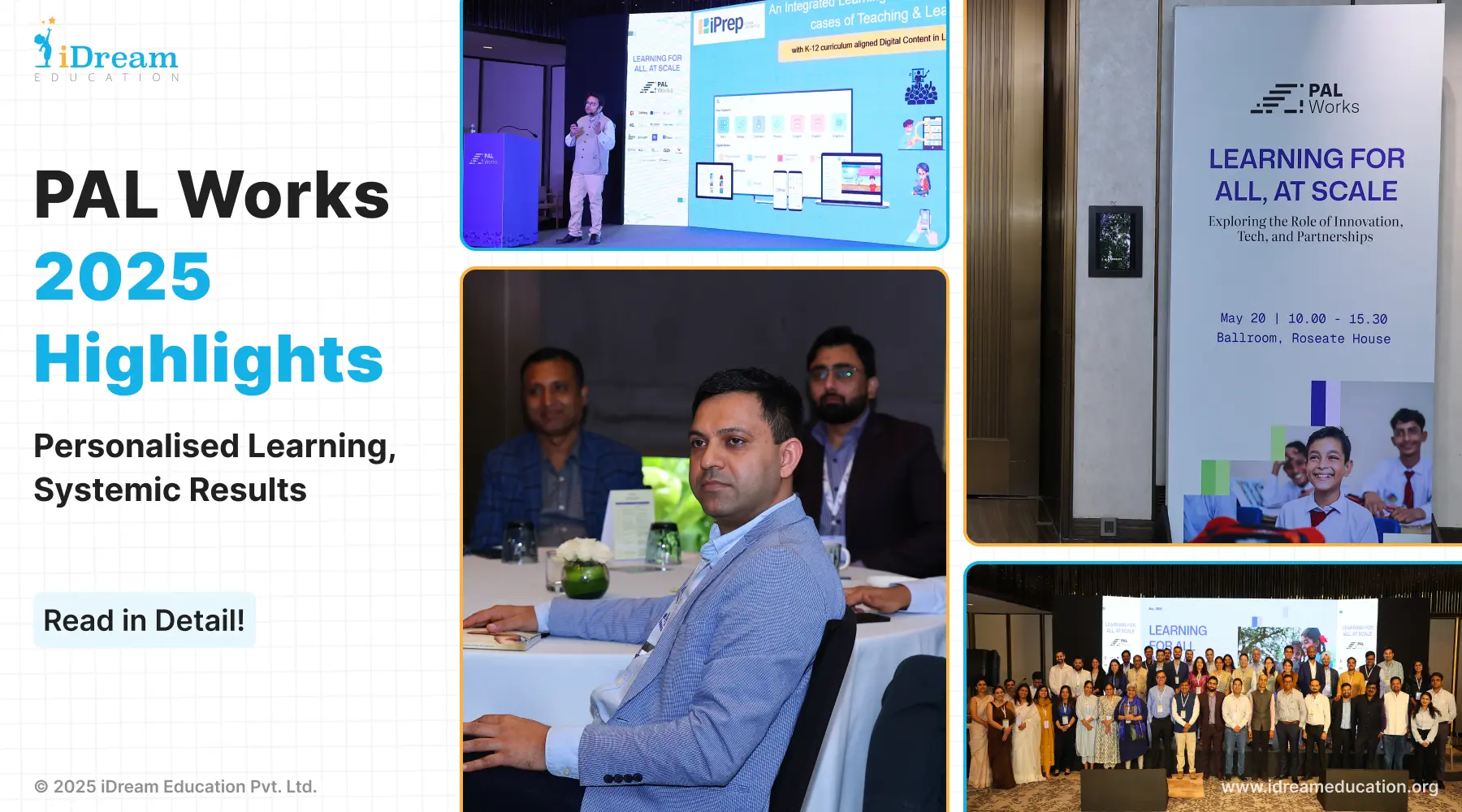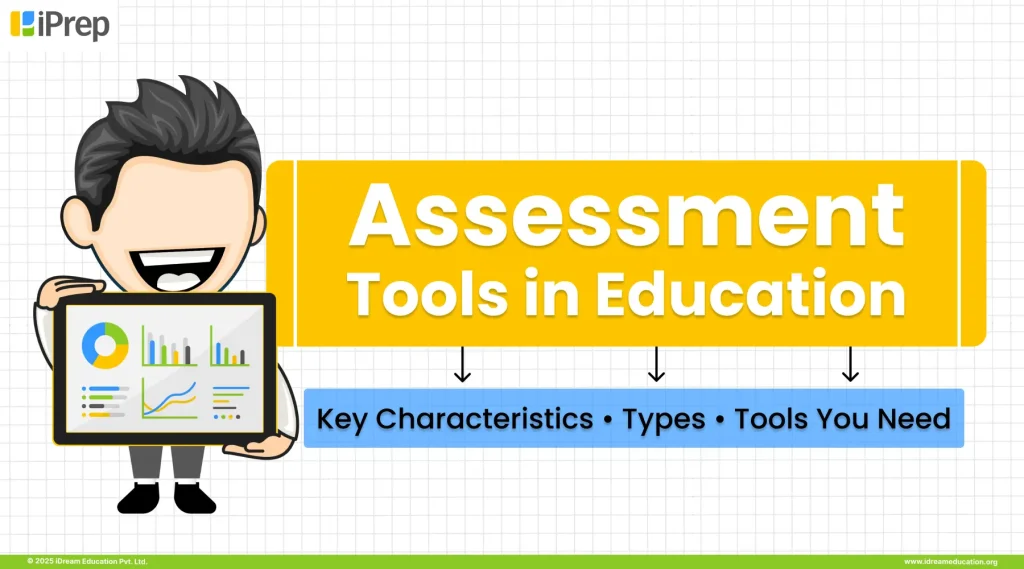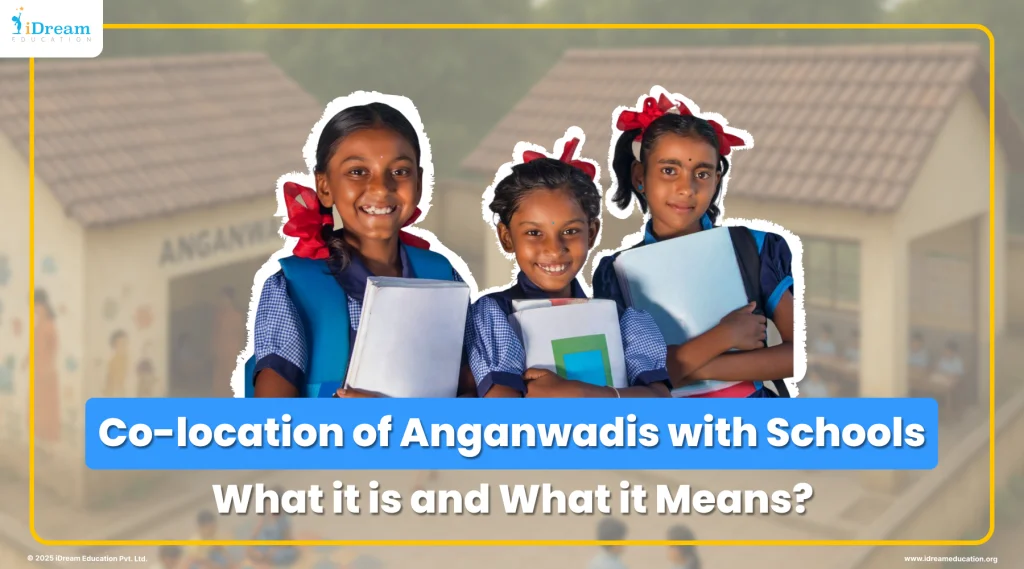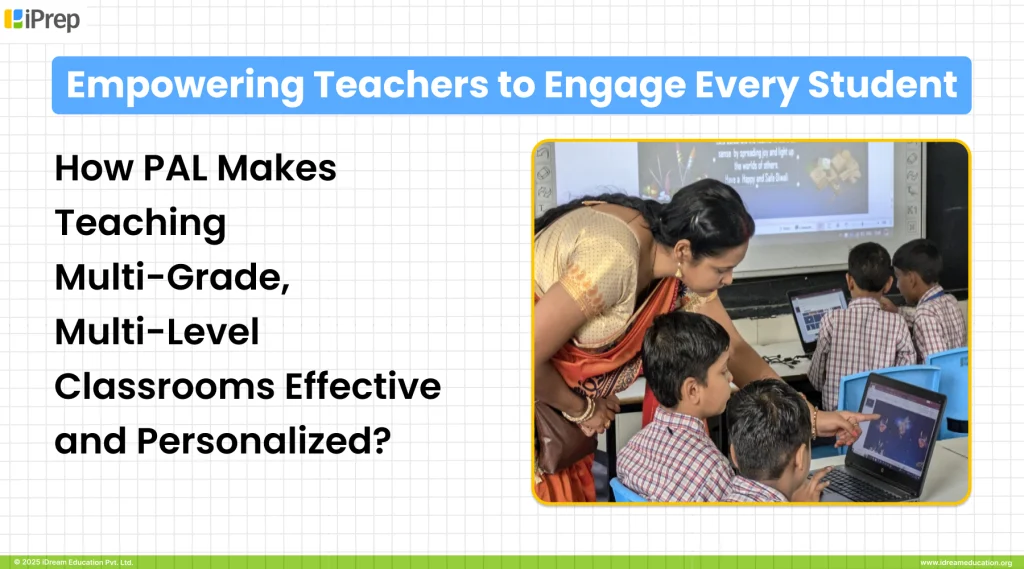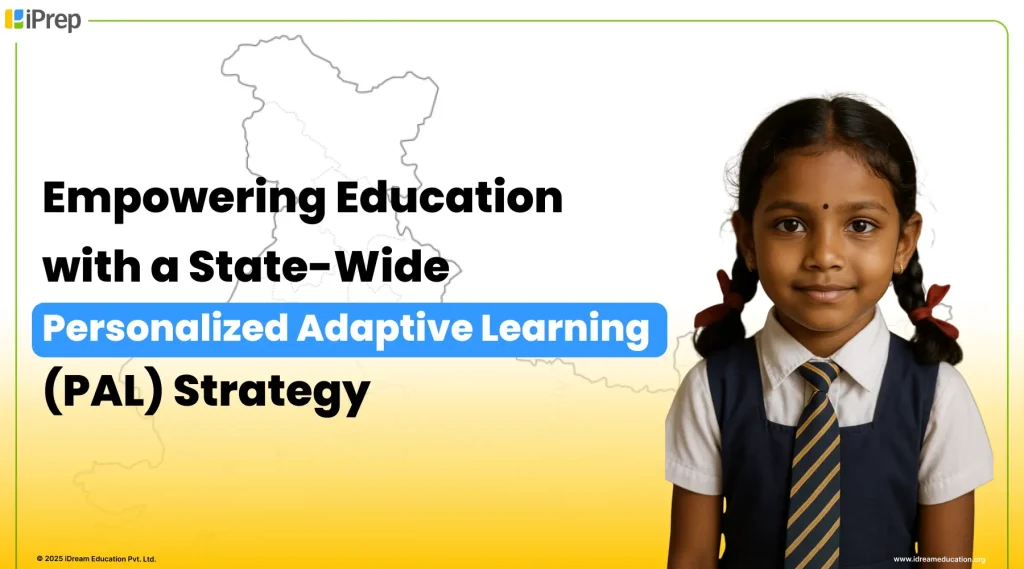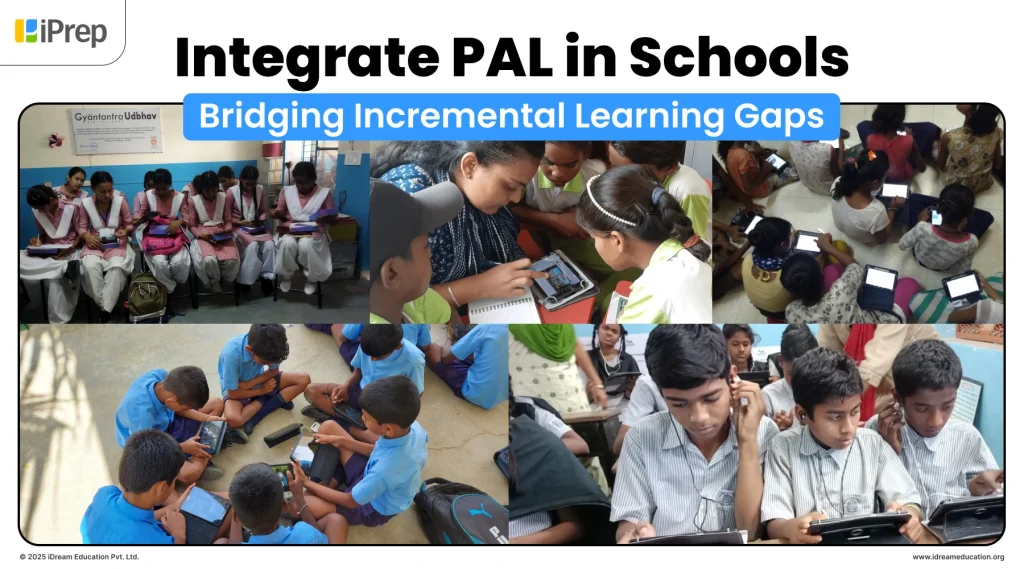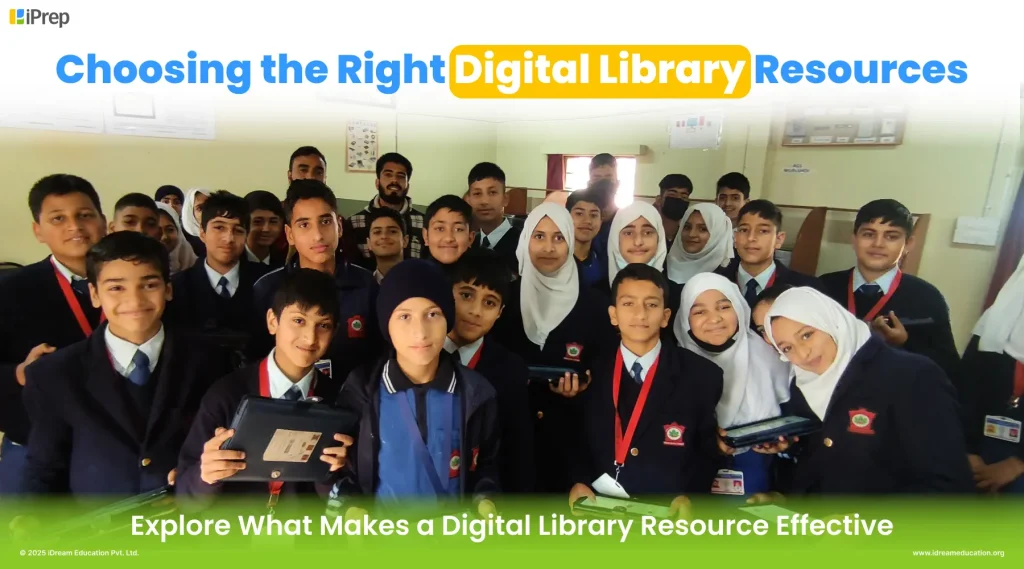Explore the journey of Personalized Adaptive Learning in India – from genesis of PAL to its impact & progress.
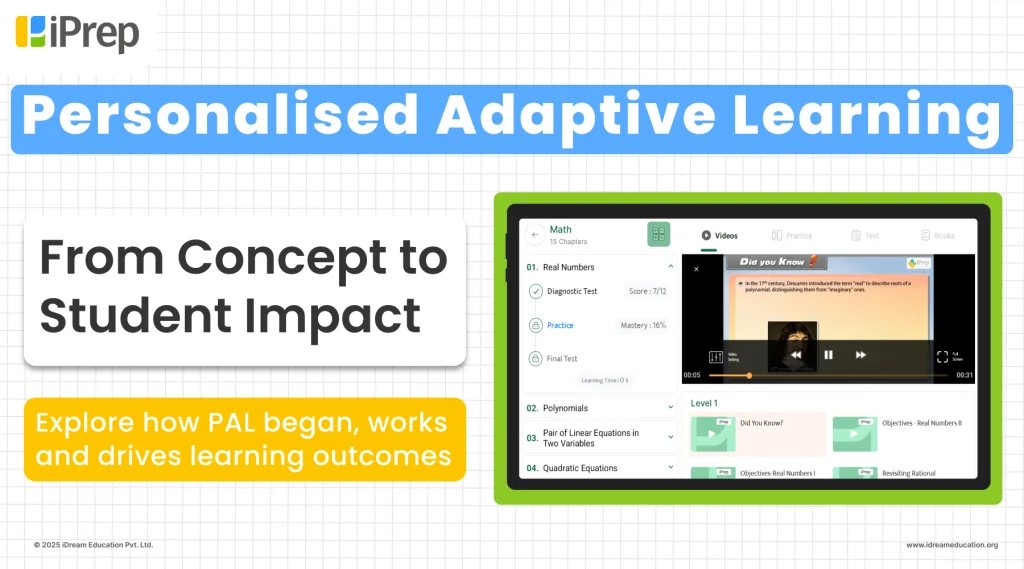
The genesis of Personalized Adaptive Learning (PAL) was born out of a simple yet powerful realization – every learner is unique. In most traditional classrooms, however, students are taught the same lessons, in the same way, and at the same pace. This one-size-fits-all approach does not consider individual differences in learning speed, prior knowledge, strengths, or challenges. As a result, many students either struggle to keep up or lose interest altogether. They skip over topics they don’t fully understand, gradually falling behind in their conceptual understanding. This creates a gap that often widens as they move to higher grades.
The learning gap in India, in particular, is complex and deeply rooted concern
- One key reason is that students are often promoted to the next grade based on cumulative scores rather than true mastery of each subject. This means their grasp of foundational skills may remain unclear, creating gaps that make future learning increasingly difficult.
- Secondly, absenteeism in classrooms whether due to family responsibilities, illness, or lack of motivation — further disrupts continuity in education.
- Third, overcrowded classrooms, limited teaching resources, and insufficient infrastructure, especially in rural areas, make effective teaching difficult.
- Fourth, the overemphasis on rote memorization aimed mainly at passing exams does little to build deeper understanding or critical thinking skills. As a result, students often struggle to apply what they learn to real-life situations.
The COVID-19 pandemic made this situation worse.
School closures and online learning highlighted the digital divide, with many students unable to access remote classes. Two years of disrupted learning widened existing gaps and created a pressing need for focused, personalized learning solutions. To truly address these challenges, we needed to first understand each student’s learning needs and then provide targeted support. This might involve one-on-one tutoring, extra practice, technology-enabled interventions, or adaptive learning platforms.
At the same time, the revised NEP curriculum framework, structured as 5+3+3+4, emphasizes covering skill gaps and life competencies across all educational levels.
Thus, it also emphasizes helping students bridge historical learning gaps, achieve grade-appropriate proficiency, and support holistic development – making Personalized Learning a vital component of the Indian education system.
It was in response to these challenges that the genesis of PAL first took shape
Personalised Adaptive Learning (PAL) is an approach designed to meet each learner where they are and help them grow from that point onward. Edtech innovators began creating PAL solutions that adapt to individual learning needs, track student progress, personalize the learning journey and help them reach grade level learning. This marked the beginning of a new era in education – one that promises “One Size does not Fits All
Now, Let’s First Understand: What is Personalized Adaptive Learning, how it works & Key Benefits of PAL?
Personalized Adaptive Learning (PAL) is a technology-driven approach that recognizes that every student’s learning journey is unique. Students often start at different levels of understanding, progress at different paces, and have distinct learning needs. PAL adapts to these individual differences to ensure every student can achieve mastery.
Here’s how PAL works:
- Diagnosis of Learning Levels: PAL software identifies what a student already knows, what concepts they are struggling with, and any misconceptions that may be hindering their progress.
- Personalized Learning Path: Based on this diagnostic, the software designs a tailored learning path for each student. This path includes adaptive practice exercises, remedial content, and targeted resources such as books and activities to address gaps.
- Concept Mastery: Students move forward only after mastering a topic or concept. Once they achieve proficiency at one level, then the next level gets unlocked, ensuring a strong foundation before progression.
- One to One Tutoring: PAL works like a one-on-one tutoring approach. With PAL software each learner gets their own personalized learning path, free from the fear of being judged or compared to others. As a result, students progress confidently, mastering concepts without needing multiple attempts or repeated assessments.
- Targeted Remediation: Unlike traditional methods, which may treat all errors the same, PAL pinpoints specific misconceptions. For example, if a student struggles with decimal multiplication, instead of simply marking the answer wrong, PAL identifies the exact issue like whether the student is unclear on decimals, double-digit multiplication, or the structure of the problem and provides step-by-step guidance to correct it.
Therefore, when industry stakeholders say PAL works, they mean its genesis is not just about practice; it’s about precisely understanding each student’s challenges and guiding them through a personalized, mastery-based learning journey.
Let Us Now Look at Key Benefits of PAL
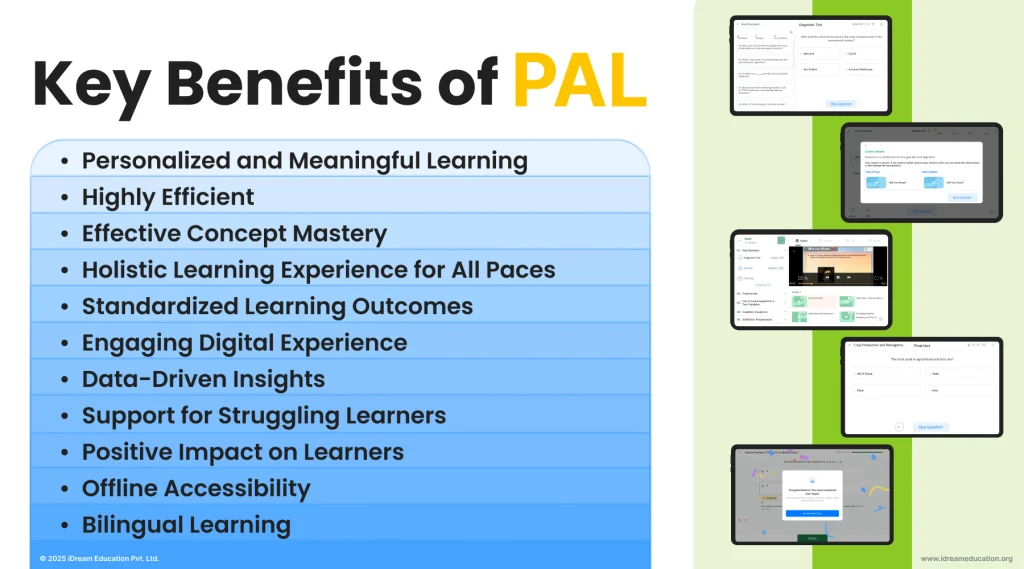
Personalized and Meaningful Learning
PAL makes the learning experience personal. By suggesting learning paths that resonate with each student’s current understanding, it ensures that every concept and activity feels relevant and meaningful.
Highly Efficient
Adaptive learning focuses only on what a student doesn’t know. It avoids repeating concepts already mastered, saving time and making the learning process far more efficient.
Effective Concept Mastery
PAL starts with areas where a student struggles and reinforces them throughout the learning journey until mastery is achieved. This repeated, targeted approach ensures strong conceptual understanding.
Holistic Learning Experience for All Paces
The PAL solution embraces different learning speeds. Faster learners move ahead confidently, while slower learners can spend as much time they need to grasp through remedial lessons, and concept recaps. Students move to higher levels only when they have fully mastered the fundamental concepts, making learning truly holistic
Standardized Learning Outcomes
Even though learners have diverse styles and strengths, the PAL learning system ensures everyone achieves the same learning outcomes. By offering distinct pathways tailored to each student, it harmonizes results without compromising personalization.
Engaging Digital Experience
The digital, interactive nature of PAL solution appeals to younger learners, making lessons more engaging and enjoyable. This interactivity helps sustain attention and motivates students to stay committed to learning.
Data-Driven Insights
PAL uses analytics to gather and examine data from diagnostic scores. Based on this, adaptive learning technology identifies patterns, detects learning gaps, and delivers content in real-time based on individual needs, far faster and more accurately than traditional methods.
Support for Struggling Learners
Students who face challenges with conventional teaching methods benefit greatly from the PAL solution. Personalized practice and remedial learning content ensure that every learner reaches expected outcomes, bridging gaps that traditional methods often leave unaddressed.
Positive Impact on Learners
PAL enhances learner confidence and perseverance. With a tailored pace and clear guidance, students feel less stressed, more motivated, and more honest in their work, leading to a healthier, more productive learning experience.
Offline Accessibility
One of the significant benefits of the PAL solution is that the PAL can be used even without internet connectivity. This makes PAL an ideal remedial learning solution for schools and communities located in low bandwidth areas. This ensures that all students can engage with adaptive learning app and content without being constrained by connectivity barriers.
Bilingual Learning
PAL supports bilingual instruction, including regional languages, enabling students to learn in the language they are most comfortable with. A PAL solution having the potential to deliver local language learning is critical because research shows that children grasp foundational concepts more effectively when taught in their mother tongue, building stronger comprehension, confidence, and long-term retention.
How PAL is Being Implemented and Progressing: Insights from State Initiatives, Research, and the Social Sector
Having seen the key benefits of PAL, it’s important to understand how this adaptive learning approach is being implemented across India – by states, through research-backed initiatives, and via social sector programs.
- PAL in Haryana: Haryana became the first state to adopt a tablet-based Personalized Adaptive Learning program. The state implemented this initiative across all 5 lakh government school students in classes 10 to 12, bringing adaptive, personalized learning directly into classrooms at scale. Know more about Haryana’s e-Adhgam initiative
- PAL in Rajasthan: Rajasthan launched one of the largest PAL programs in India to address learning loss caused by the Covid-19 pandemic. The program seeks to support 3 million students, with a special focus on adolescent girls, by offering personalized digital content and real-time feedback through a PAL platform accessible via school labs or smartphones.
- PAL in Andhra Pradesh: Andhra Pradesh introduced personalized adaptive learning systems in 51 high schools, with plans to expand further. Launched in 2018, the program has expanded significantly and was recently praised by Nobel laureate Michael Kremer
Several other states are also exploring/ adopting PAL solutions for schools and NGOs, often in partnership with companies that provide PAL software or complete PAL setups such as PAL Lab, digital library with PAL or PAL on tablets.
Research Insights on PAL
An independent study conducted by Nobel Prize-winning economist Michael Kremer on Andhra Pradesh’s Personalised Adaptive Learning (PAL) model revealed inspiring learning outcomes. Students who used PAL showed improvements equivalent to 1.9 years of schooling compared to their peers who did not use the programme. Those in Grades 7 to 9 who participated in the PAL programme over two academic years (about 17 months) and spent an average of 35.3 hours using the software to learn math concepts achieved learning gains at nearly twice the rate of students who did not use the software. Highlighting the potential of this approach, Kremer remarked, “If I were a policymaker in India, I’d go ahead with personalized adaptive learning.” This research underscores the transformative potential of PAL in improving learning outcomes at scale. Read in detail
Our Implementation Experience from Govt. and Social sector PAL Programs: Progress from the Ground
Being part of the education ecosystem for over nine years, we have worked extensively with government schools, social sector partners, and NGOs to deploy digital learning solutions that truly make a difference. For the past three years, we have been actively working to accelerate PAL implementation. From setting up PAL labs to enabling PAL software on personalized student devices across states such as Haryana, Punjab, and others, our implementation experience has consistently shown that PAL improves student learning outcomes.
Insights from Haryana’s e-Adhigam Initiative
One of the most impactful examples comes from Haryana, where we enabled our PAL software, iPrep PAL, on student tablets under the government’s e-Adhigam program. In the academic year from July 2023 to June 2024, students using the PAL software showed inspiring progress:
- Initial Performance: Average diagnostic test score – 35.6%
- Post-PAL Performance: Average final test score – 73.6%
This represents an impressive 38% improvement, clearly indicating how PAL’s personalized, mastery-based approach accelerates learning outcomes when implemented at scale.
Insights from PAL Lab Implementation in Punjab
Similar improvements have been observed in our PAL lab implementations in government schools across Punjab:
- Overall Improvement: Students demonstrated an average 30–35% improvement across subjects from diagnostic to final assessments.
- Closing Foundational Gaps: A significant proportion of students who started at beginner or intermediate levels progressed to higher proficiency levels, successfully bridging critical learning gaps.
- Achieving Grade-Level Competency: Hundreds of students who were initially below grade level reached grade-level expectations. For instance, in Science, the number of grade-level students increased from just 8 at baseline to 464 by the final assessment.
The research by Michael Kremer and our on-ground insights from Haryana, and Punjab on PAL usage and outcomes clearly show that PAL works – But only with structured programmatic support. Its success relies on creating a safe environment for students to learn without judgment, providing experiential training for both teachers and students, conducting regular school visits to ensure smooth adoption, and continuously monitoring usage and learning outcomes to guide timely interventions.
Different Ways to Implement PAL in Schools & for At Home Learning
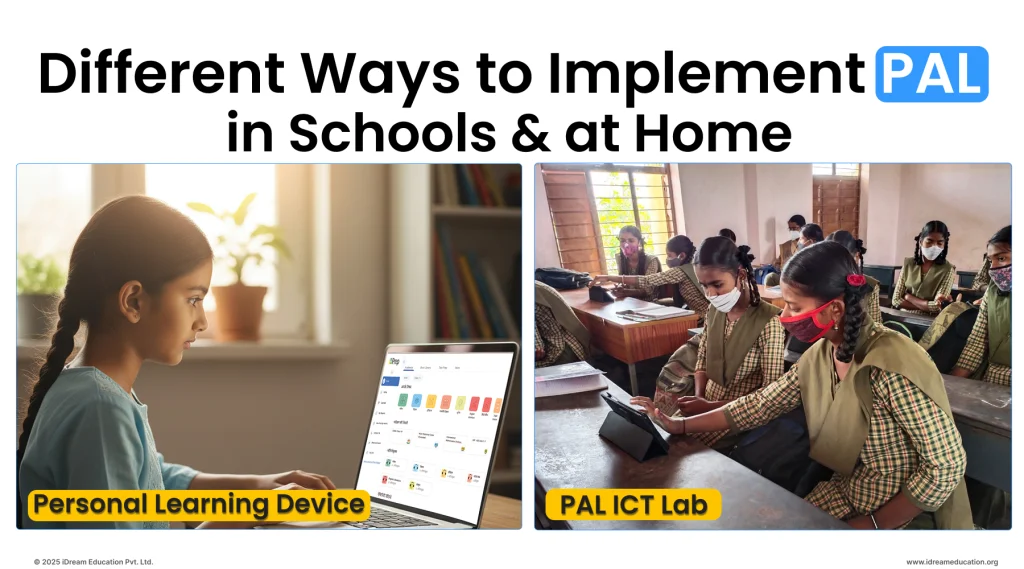
Personal Learning Device:
- In this approach, each student receives a personal learning device that can be used both at school and at home. For schools, tablets are typically provided, preinstalled with the PAL app and preloaded remedial learning content, enabling students to learn completely offline. For home learning, PAL can be accessed on tablets, Chromebooks, laptops, or even mobile phones. On tablets, Chromebooks, or laptops, the app comes pre-installed with content aligned to the curriculum. For mobile devices, the PAL app and content can be accessed online by downloading it from the Play Store or App Store. In both cases, the PAL app is available in preferred languages, and offers a fully personalized learning path for each student. This ensures continuity of learning and allows students to progress at their own pace, whether in school or at home.
- This approach can be implemented for individual students or scaled up to small- or large-scale remedial learning programs, ensuring that every learner receives targeted support and continuity of learning, whether in school or at home.
PAL ICT Lab
- In this approach, a dedicated PAL Lab is set up in the school with a storage and charging rack containing tablets, Chromebooks, or laptops – each pre-installed with the PAL app and preloaded with adaptive learning content. The PAL software also includes a built-in usage reporting mechanism for tracking engagement and ensuring accountability. PAL Labs can be customized to suit the school’s needs and typically accommodate anywhere from 5 to 60 devices, which students across different grades can use on a rotational basis.
- This PAL ICT Lab model is highly scalable and cost-efficient, making it ideal for large-scale or statewide PAL implementations. By enabling multi-grade access through a single setup, schools can deliver personalized adaptive learning to all students without needing individual devices for each one. The PAL Lab can also be designed as a digital library, offering not only adaptive learning content but also e-books and curriculum-aligned resources, or it can be integrated into an existing digital library space with just the devices added.
All these PAL implementation models, whether through personal learning devices, PAL ICT labs, or digital libraries with PAL are most effective when complemented with continuous training, hand-holding, and technical support. Ongoing capacity building for teachers, regular program monitoring, and timely assistance are essential to ensure the successful adoption and long-term impact of any PAL initiative.
Since the genesis of PAL, its progress has gone beyond merely transforming learning paths. It is helping thousands of students build strong foundational skills, bridge learning gaps, and achieve grade-level mastery.
If you are looking for a PAL solution and wish to experience our PAL software – including how it can be implemented in your programs through our full-scale programmatic interventions, you may contact us at +91 7678265039. You can also write to us share@idreameducation.org or share your details here
You May Explore More About Personalized Adaptive Learning (PAL)
Develop a deeper understanding of Personalized Adaptive Learning (PAL), through our other created blogs. Our articles cover a wide range of topics — from PAL setup, implementation insights and research findings to state initiatives and social sector programs, helping policymakers, and stakeholders stay informed about the latest developments in adaptive learning.
- Read Here to Know How to Make the PAL Learning System Fun and Engaging for the Students to Use Regularly
- Insights from PAL Works: Here What you Should Know
- Walk through Muskaan’s learning journey with iPrep PAL and see how she bridged her learning gap
- Read About Increasing Adoption of PAL in 2025
- Discover what Michael Kremer’s study reveals about personalized learning in India
- Explore how the end of No Detention Policy could boost PAL adoption in government schools.
- Read Why is PAL for Government School Students Important?
- Discover how to bring personalized adaptive learning to your school with a PAL Lab.
- Can adaptive learning be the key to closing educational gaps? Find out.
- See the impact of learning gaps and how we can bridge them
- Find out why Personalized Adaptive Learning is essential for NEP success.
Frequently Asked Questions -
1. What is Personalized Adaptive Learning (PAL)?
Personalized Adaptive Learning (PAL) is a technology-driven approach that understands that each student learns differently. It recognizes that learners start at different levels, progress at different speeds, and have unique learning needs. PAL adapts lessons and resources to match each student’s individual journey, ensuring they achieve mastery before moving on.
2. What PAL solutions are needed?
Personalized Adaptive Learning (PAL) is an educational approach that recognizes each learner’s uniqueness considering their prior knowledge, learning pace, strengths, and challenges. Unlike traditional classrooms where all students are taught the same content in the same way, PAL adapts the learning experience for each student. This ensures that learners don’t fall behind due to gaps in understanding and remain engaged, motivated, and confident in their learning journey.
3. Why is PAL particularly relevant in addressing learning gaps in India?
In India, learning gaps are widespread and complex due to factors like students being promoted without mastery, high absenteeism, overcrowded classrooms, limited teaching resources, and an exam-focused education system. These conditions often leave students struggling with foundational skills and critical thinking. PAL addresses these gaps by providing individualized learning paths, reinforcing concepts where needed, and ensuring students build strong, long-lasting understanding rather than just memorizing information.
4. How does PAL improve learning outcomes compared to traditional methods?
PAL continuously assesses each student’s understanding and adapts lessons accordingly. Students who need extra practice on a topic receive it, while those who grasp concepts quickly can move ahead. This approach prevents learners from skipping over concepts they don’t fully understand, reduces frustration, and fosters deeper comprehension. By tailoring learning to individual needs, PAL helps students build stronger conceptual knowledge, critical thinking skills, and confidence preparing them for higher grades and real-life problem-solving.
5. How does PAL work?
PAL works in a structured, student-centered way: Diagnosis of Learning Levels: It assesses what students already know, what they struggle with, and any misconceptions. Personalized Learning Path: Based on this assessment, PAL creates a tailored path including adaptive exercises, remedial content, and targeted resources. Concept Mastery: Students advance only after mastering a topic, ensuring a strong foundation before progressing. One-to-One Tutoring: PAL provides a safe, individualized learning environment, allowing students to learn confidently without fear of judgment. Targeted Remediation: Instead of treating all errors the same, PAL identifies the root cause of mistakes and provides step-by-step guidance to correct them.
6. What are the main benefits of Personalized Adaptive Learning (PAL)?
Personalized and Meaningful Learning Highly Efficient Effective Concept Mastery Holistic Learning for All Paces Standardized Learning Outcomes Engaging Digital Experience Data-Driven Insights Support for Struggling Learner Positive Impact on Learners Offline Accessibility Bilingual Learning
7. How can PAL be implemented in schools?
PAL can be integrated into schools in several ways to suit different infrastructure and learning needs: Personal Learning Device: Each student can access PAL content on a tablet, laptop, or other personal device, enabling individualized learning anytime, anywhere. PAL ICT Lab: Schools can set up a dedicated ICT lab where students use PAL software in a structured environment, guided by teachers, allowing group access while maintaining personalized learning paths.


